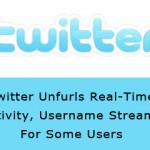 San Francisco — Earlier this week global search engine giant Google unfurled its much touted Google+ Pages for businesses and brands, an innovative way to bridge gap between your customers online. Now, the barrier between pay-per-click (PPC) marketing and social media marketing are continuing to blur as, Google now lets you couple the +1’s of your Google+ Page to your site, your search results, and your AdWords ads.
San Francisco — Earlier this week global search engine giant Google unfurled its much touted Google+ Pages for businesses and brands, an innovative way to bridge gap between your customers online. Now, the barrier between pay-per-click (PPC) marketing and social media marketing are continuing to blur as, Google now lets you couple the +1’s of your Google+ Page to your site, your search results, and your AdWords ads.
Until this week, +1 recommendations recorded on Google+ did not appear on AdWords ads. But, the company on Wednesday revealed a new AdWords feature called Social Extensions, which enables you to include your AdWords campaigns.
However, the earlier method meant that searchers would only see a +1 on a paid ad if their friend had specifically recommended its landing page. “Currently (and for campaigns that do not have Social Extensions enabled) your AdWords ads only displayed +1’s from people who have specifically +1’d that ads landing page,” explains Dan Friedman of Google’s Inside AdWords Crew.
“By facilitating Social Extensions on your ad campaigns you are able to leverage all the +1’s your brand has received, whether it be on a search result, on your Google+ Page, your website or on your ads, making it more likely that someone who sees your ad will have a friend or contact who has recommended it,” Friedman wrote on the blog.
This enhanced level of consolidation between PPC and social media can be activated using a new AdWords feature called Social Extensions. To add a Google+ page, marketers simply need to click on the Ad Extensions tab in their account, select Social Extensions and then enter the URL of their Google+ Page.
So what perks await businesses that take the jump and start their own Google+ pages? For one there are many rewards of having your customers recommend you to their friends by giving you a “+1” on your page. Google claims its new business pages are formulated to help businesses have more interaction and even face-to-face time with their customers. Google is promoting several businesses and organizations that have already signed on and created their own pages such as the Dallas Cowboys, Pepsi, Toyota and, yes, the Muppets.
You can activate Social Extensions by clicking “Ad Extensions” tab in your AdWords account and choosing the option in the top down menu. Choose new extension. Google will ask you to add your verified Google+ Page URL.

Google explained about how to get your Profile or Page verified here. “If we think you or your page might benefit from a badge, we’ll reach out to manually verify you,” the company says. “If you believe a profile or page is impersonating you or your business, report the profile or page and select the ‘Impersonation’ option.
In welcoming the move, Mark Baker, online marketing manager at the Eword, said: Google has obviously decided to add more social media attributes to its core search business. By allowing PPC ads to show +1s given to an entire brand on Google+, Google is enormously increasing the number of recommendations that users will see. Since people are more likely to click on ads recommended by their friends, this has the potential to significantly improve click-through rates for brands using the new Google+ Pages.
“We believe that this has the offers a promising prospect to improve your overall ad performance,” he adds. “In fact, 71% of shoppers say that recommendations from friends and family impact their purchasing decisions. These additional recommendations may result in more conversions and deeper engagement with your business overall.”
Moreover, if you have an authenticated profile or page and modify your name, even by a single character, your verification status will be reset and you will need to be re-verified.”
In addition, if you also alter the Page connected with your AdWords campaign, the campaign will begin adding +1’s on your ad to the Page’s total. Also, social extensions are available in all countries. Advertisers will be charged for standard clicks on text ads when users click the ad text, but not when a user +1’s the ad.
Social extensions can appear in an ad when it is displayed on Google.com as well as throughout the Google Display Network. That denotes to both desktop and mobile. The feature is compatible with all AdWords targeting options.
Surprisingly, the feature is not “yet” accessible via AdWords Editor or the AdWords API. Given that Google made a point of saying “yet,” which means that it will change in the future.


